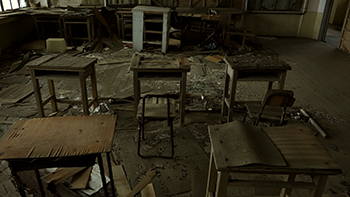World Heritage of Japan
Part 4
Iwami Ginzan Silver Mine and its Cultural Landscape

Brief Overview of the Site
The Iwami Ginzan was a silver mine in the city of Oda, Shimane Prefecture, on the main island of Honshu. It was one of the largest silver mine in entire history. It was active for almost four hundred years, since its discovery in 1526 until its eventual closing in 1923.
The Iwami Ginzan was a silver mine in the city of Oda, Shimane Prefecture, on the main island of Honshu. It was one of the largest silver mine in entire history. It was active for almost four hundred years, since its discovery in 1526 until its eventual closing in 1923.












Tomioka Silk Mill and Related Sites

Brief Overview of the Site
Tomioka Silk Mill is Japan's oldest modern model silk reeling factory, established in 1872 by the government to introduce modern machine silk reeling from France and spread its technology in Japan. The factory is designated by the government as a historical site and all its buildings are preserved in very good condition.
Tomioka Silk Mill is Japan's oldest modern model silk reeling factory, established in 1872 by the government to introduce modern machine silk reeling from France and spread its technology in Japan. The factory is designated by the government as a historical site and all its buildings are preserved in very good condition.













Ogasawara Islands

Brief Overview of the Site
The Ogasawara Islands are an archipelago of over 30 subtropical and tropical islands, some 1,000 kilometres directly south of Tokyo, Japan. Because the Ogasawara Islands have never been connected to a continent, many of their animals and plants have undergone unique evolutionary processes. This has led to the islands' nickname of the "The Galápagos of the Orient", and their nomination as a natural World Heritage Site on June 24, 2011.
The Ogasawara Islands are an archipelago of over 30 subtropical and tropical islands, some 1,000 kilometres directly south of Tokyo, Japan. Because the Ogasawara Islands have never been connected to a continent, many of their animals and plants have undergone unique evolutionary processes. This has led to the islands' nickname of the "The Galápagos of the Orient", and their nomination as a natural World Heritage Site on June 24, 2011.














Sites of Japan’s Meiji Industrial Revolution

Brief Overview of the Site
Sites of Japan’s Meiji Industrial Revolution: Iron and Steel, Shipbuilding and Coal Mining are a grouping of historic sites that played an important part in the industrialization of Japan in the end of the samurai era and Meiji period, and are part of the industrial heritage of Japan. Eight areas are registered, with thirty component sites. The site testifies to what is considered to be the first successful transfer of Western industrialization to a non-Western nation.
Sites of Japan’s Meiji Industrial Revolution: Iron and Steel, Shipbuilding and Coal Mining are a grouping of historic sites that played an important part in the industrialization of Japan in the end of the samurai era and Meiji period, and are part of the industrial heritage of Japan. Eight areas are registered, with thirty component sites. The site testifies to what is considered to be the first successful transfer of Western industrialization to a non-Western nation.














The Architectural Work of Le Corbusier

Brief Overview of the Site
The Architectural Work of Le Corbusier, an Outstanding Contribution to the Modern Movement is a collection of 17 sites designed by the Franco-Swiss architect known as Le Corbusier. These sites demonstrate how Modernism was applied to construction and show the global range of a style and an architect. In Japan, The National Museum of Western Art located in Tokyo is registered as one of the site of the collection.
The Architectural Work of Le Corbusier, an Outstanding Contribution to the Modern Movement is a collection of 17 sites designed by the Franco-Swiss architect known as Le Corbusier. These sites demonstrate how Modernism was applied to construction and show the global range of a style and an architect. In Japan, The National Museum of Western Art located in Tokyo is registered as one of the site of the collection.









See Also




